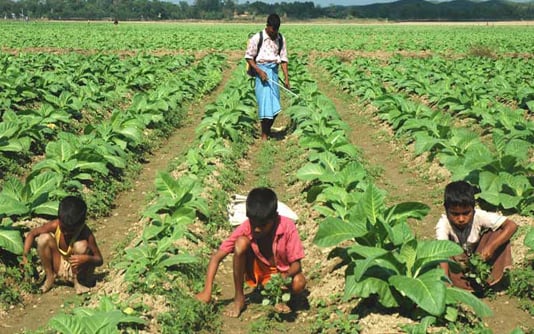DHAKA, Oct 21, 2018 (BSS/UNICEF FEATURE)-After early demise of his father
Hossen Ali, minor boy Sattar who just crossed 12 years had to take the burden
of his four-member family on his tiny shoulder.
This misfortune has compelled him and his younger brother Sadek (10) to
stop going to school. The helpless siblings started working as agriculture
labourers to eke out a living for the family.
To add a further blow to the sufferings, Sattar’s elder brother Babul, who
was also a teenager, got married last year after his father death and started
living separately.
“After my father’s death, my mother became mentally imbalanced as she could
not withstand the shock. That’s why we needed money for her treatment. But,
we had no option to earn the required money to do so,” said Sattar, who lives
in Purba Gobaria village under Kuliarchar upazila in Kishoreganj district.
He said they had no alternatives, but stop going to school and started
working as agriculture labourers. “We became paupers earlier spending all the
family savings for our father’s treatment,” he said.
“Now my younger brother and I work on our own land as well as other’s land
as day labourers because we have no alternative option,” Sattar said with
tearful eyes.
The eventual involvement of Sattar and his brother in agriculture as child
labourers depicts the country’s grimy scenario of child labours’ engagement
in the agriculture sector.
Like Sattar, many children are becoming school dropouts for their
involvement in non-formal agriculture sector in the country, although there
is no specific data about the number of child labourers working in
agriculture.
But, the Food and Agriculture Organization (FAO) in its recent report says
child labour in agriculture sector worldwide has started to rise in recent
years driven by poverty and an increase in conflicts and climate-induced
disasters.
Citing a report of the ILO on the trend of global child labour, the FAO
warned that the rising trend in child labour not only threatened the
wellbeing of millions of children, but also undermined efforts to end global
hunger and poverty.
The ILO report noted surge in child labourers in agriculture worldwide in
recent years when the number swelled from 98 million in 2012 to 152 million
in 2016 due mainly to prolonged conflicts and climate related natural
disasters followed by forced migration.
According to the report, nearly three out of every four children in child
labour worked in agriculture when 70 percent of them were in unpaid family
labour.
Child labour in agriculture is a global issue that is harming children,
damaging the agricultural sector and perpetuating rural poverty.
When children are forced to work long hours, their opportunity to attend
school and develop their skills is limited, which interferes with their
ability to access decent and productive employment opportunities later in
life including opportunities in a modernised agricultural sector.
Labour expert Sharfuddin Khan said all works carried out by children are
not considered child labour while some activities may help children acquire
important livelihood skills.
But, he said, much of the work children carry out in agriculture is not
appropriate for their age. Noting that it is often hazardous and can
interfere with their wellbeing, he said when children work in fields treated
with pesticides or carry heavy loads, it can interfere with their social and
physical development.
Sharfuddin, the executive director of Development Communication Network
(DCN), said most of the country’s child labourers are working in agriculture
sector, but there is no official data in this regard and that is why a
comprehensive study should be carried out to indentify of the number of child
labourers working in agriculture sector.
“Since more than 70 percent of child labour worldwide takes place in
agriculture, it is vital to integrate child labour into national agricultural
policies and address the issue at household level. Otherwise, it will further
exacerbate poverty and hunger in rural areas,” FAO deputy director-general
(programmes) Daniel Gustafson said on a recent webpost.



